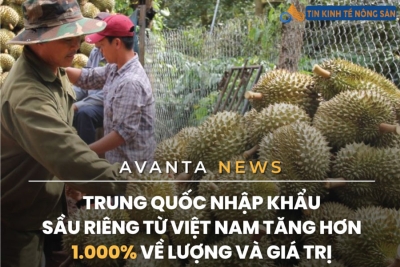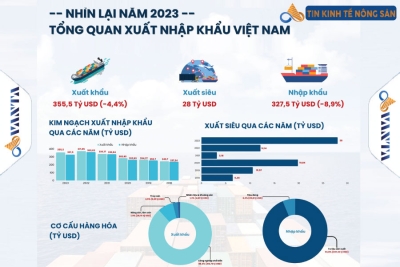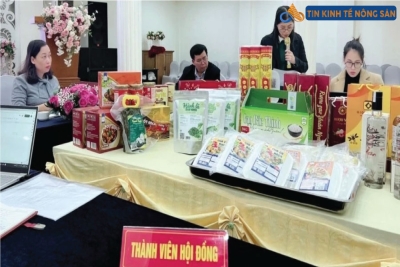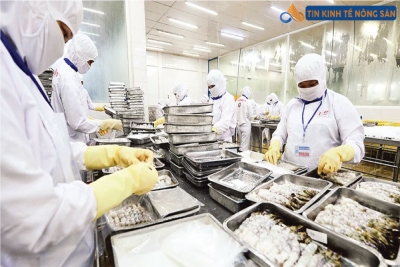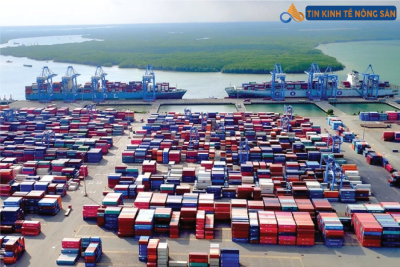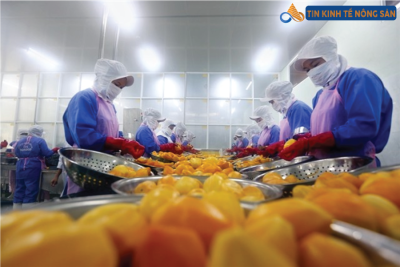Will the billion-dollar agricultural exports continue to surge?
In 2023, agriculture was considered the backbone of the economy, thanks to the strong growth in both volume and price of many exported agricultural products. According to experts' forecasts, in 2024, these pillars will continue to have high growth opportunities, and the market will welcome many new "rising stars."
Rice and fruit exports maintain their momentum
In just about two months, farmers in the Mekong Delta will enter the winter-spring rice harvest season, the most important crop of the year in this region. In previous years, during the peak harvest season, rice prices plummeted due to abundant supply. However, this year, the situation has completely changed.
Many rice farmers have reported that traders are continuously seeking rice and offering advance payments. Early harvesters have mentioned that the prices for fresh rice in the fields have reached an unprecedented level of 9,300 VND/kg, and specialty varieties like ST in shrimp-rice rotation models are hovering around 10,000 VND/kg. Therefore, there is a basis to believe that millions of rice farmers in the Mekong Delta are about to enjoy a successful harvest season with high prices.
Rice exports are forecasted to continue favorably, while domestic rice prices remain high
Nguyen Van Don, Director of Viet Hung Co. Ltd (Tien Giang), stated: "Currently, Vietnamese businesses are hesitant to engage in new transactions or sign new contracts due to high prices and significant risks. Even the domestic market is experiencing increased demand and higher prices, especially for specialty rice like ST25, which has seen an increase of 4,000 - 5,000 VND/kg compared to 10 days ago, reaching 25,000 - 26,000 VND/kg. The reason behind this is that this rice variety has won the title of "World's Best Rice" for the second time, leading to increased demand for gifting and consumption during the Lunar New Year. Although other crops are awaiting the winter-spring rice harvest in the Mekong Delta, prices are still expected to remain high due to limited alternative supply sources. Overall, in 2024, exports will continue to be favorable due to lower demand compared to supply."
Agreeing with the above viewpoint, Do Ha Nam, Vice Chairman of the Vietnam Food Association (VFA), predicted: "The average export price of Vietnamese rice in 2024 may maintain at $600/ton, and the average rice price will also reach 8,000 VND/kg. The demand for rice is present in all markets, not only traditional ones like the Philippines, Indonesia, and Africa, but also in the Chinese market, which is highly anticipated. In recent years, China has used its large reserves to control market prices, which also means they will resume imports when there are good price opportunities."
In addition to rice, fruit and vegetable exports have been a shining highlight, with a growth rate of 69% in 2023 compared to 2022. Recognizing the opportunities in this sector, Nguyen Van Muoi, Deputy Head of the Southern Branch of the Vietnam Gardening Association, stated: "In 2023, durian showed exceptional growth, starting with almost zero exports and ending with a value exceeding 2.2 billion USD. It is projected that in 2024, if there are no adverse changes, durian exports can reach 3.5 billion USD. The entire fruit and vegetable industry can continue to lead in terms of growth rate, as recently, Vietnam and China signed a memorandum of understanding on exporting watermelons."
Furthermore, negotiations are underway for several other products that have the potential to sign memorandums of understanding this year, such as frozen durian, fresh coconuts, and tropical fruits with seeds (pomelo, orange, and kumquat). The demand from the Chinese market is extensive, not only for durian but also for many tropical fruits from Vietnam. Additionally, Vietnamese durians have many growth opportunities in other markets as well.
Export of durian is set to continue breaking new records in 2024.
However, Mr. Muoi cautions that due to recent rapid growth, there have been numerous quality issues and immature durian harvests, posing risks for businesses and leading some to withdraw from the market. The agricultural sector needs measures to control the quality of durian harvests.
"We are developing well in terms of quantity and need to gradually improve the quality to increase value and continue expanding the market," proposed Mr. Muoi.
Coffee and black pepper make a comeback
Coffee and black pepper have experienced periods of expansion followed by significant price drops, causing farmers to become discouraged. However, these commodities have unexpectedly seen a strong price increase in the past two years. Coffee prices are now approaching 70,000 Vietnamese dong per kilogram, a level few could have anticipated.
Mr. Nguyen Nam Hai, Chairman of the Vietnam Coffee-Cocoa Association (VICOFA), stated, "By the end of 2023, Vietnam's coffee exports reached 1.66 million tons, a 4.5% decrease compared to the 2021-2022 season. However, the export value still increased by 3.4% to reach $4.08 billion USD, thanks to the higher prices. This is the highest export value in history. The average export price of Vietnamese coffee reached $2,451 per ton, a 5.5% increase compared to the previous season. Therefore, it can be said that the coffee industry is gradually recovering and returning to its golden age."
According to Mr. Hai, the decline in coffee export volume is due to increased domestic consumption. During the period of 2015-2020, domestic coffee consumption increased by an average of 3.94% per year, from 158,000 tons in 2015 to 220,000 tons in 2022. Per capita consumption rose from 1.7 kg in 2015 to 2.2 kg in 2022. It is predicted that domestic consumption in the period 2025-2030 will increase at an average rate of about 6.6% per year, reaching 270,000 - 300,000 tons per year by 2025.
VICOFA's leadership predicts, "With decreased production and increased export demand, coffee growers may benefit from attractive coffee prices. The export value may also reach a new record, estimated at $4.5 - $5 billion USD this year."
As for black pepper, it has been a long time since pepper growers have felt such excitement and anticipation for the Lunar New Year. Over the past week, pepper prices have risen to over 80,000 Vietnamese dong per kilogram. Major pepper-growing provinces such as Dak Lak, Gia Lai, Dak Nong, and Dong Nai have witnessed price increases ranging from 500 to 2,000 Vietnamese dong per kilogram. Pepper growers on online forums have expressed great enthusiasm as prices have rebounded and are predicted to exceed 100,000 Vietnamese dong per kilogram, reminiscent of the peak period.
Speaking to Young People's Newspaper, a representative of the Vietnam Pepper and Spice Association (VPSA) said, "In 2023, Vietnam exported 264,094 tons of various types of pepper, including 236,148 tons of black pepper and 27,946 tons of white pepper. The total export turnover reached $906.5 million USD. Compared to 2022, the export volume increased by 13.8%, but the export turnover decreased by 8%. Currently, the United States is the largest customer for Vietnamese pepper, accounting for 23.5% of the total export value as of November 2023. Vietnam also maintains its position as the largest supplier of pepper to the US market."
China ranks second as a customer for Vietnamese pepper, accounting for 14.1%, followed by India and Germany, accounting for 5.4% and 4.3% of the total export value of this commodity, respectively. Despite the price decline, the pepper industry shows positive signs, especially with a significant demand from the Chinese market, and other markets such as India and the United States are experiencing a rebound. The target of the pepper industry is to rejoin the "billion-dollar club" as early as 2024.
Overall, the agricultural commodities are optimistic for achieving billion-dollar revenues in 2024 after a breakthrough year in 2023.
According to the Department of Crop Production (Ministry of Agriculture and Rural Development), the total coffee-growing area in the country is approximately 710,000 hectares, of which 653,000 hectares are currently under cultivation, yielding 1.845 million tons with a productivity of 2.82 tons per hectare. Despite the increased coffee prices in 2023, coffee plants still cannot compete with other fruit trees such as durian, avocado, or citrus due to the low prices in previous years. As a result, farmers have not invested significantly in coffee cultivation, except for some coffee companies and cooperatives.
Source: Young People's Newspaper
 VN
VN

